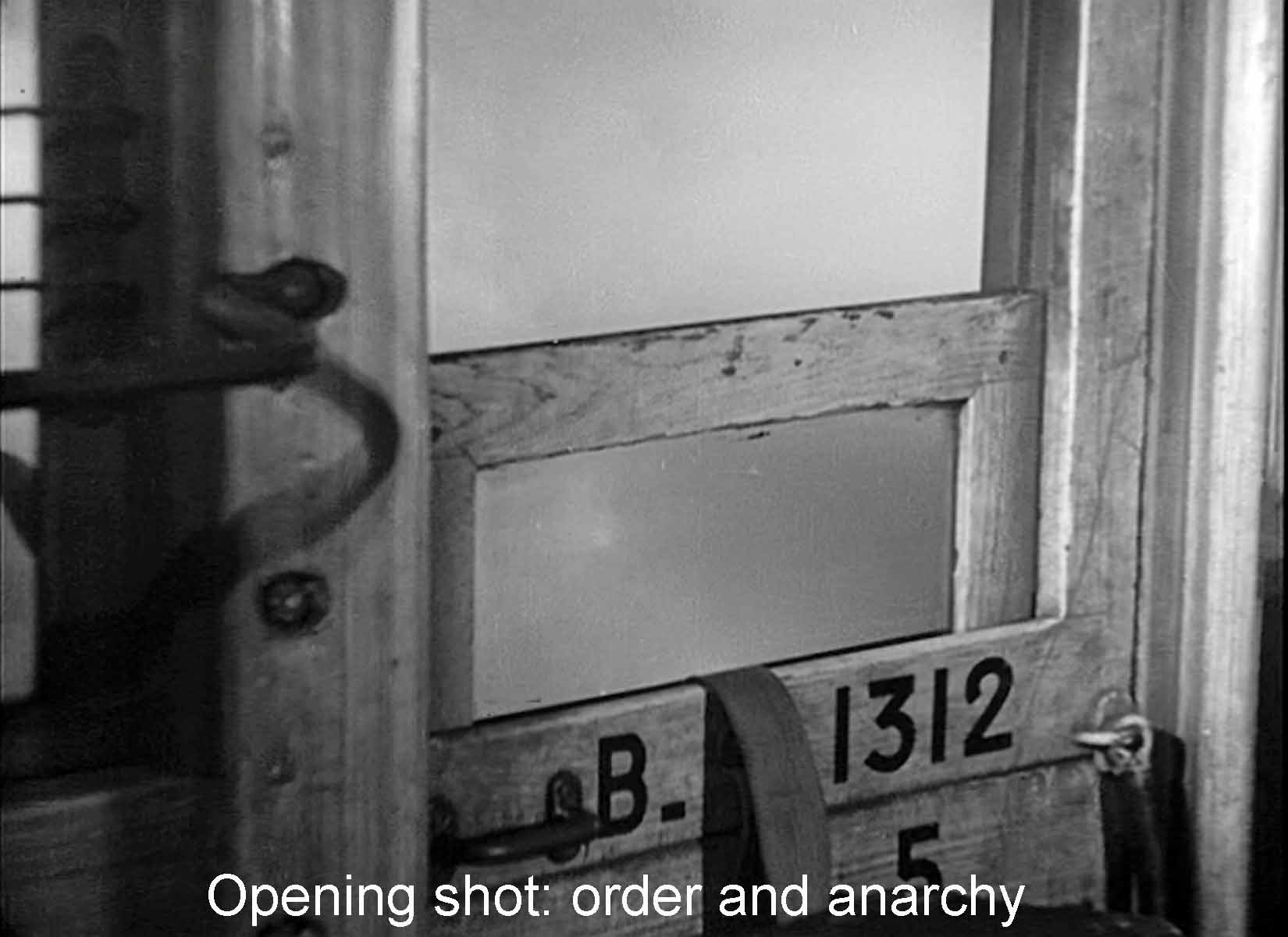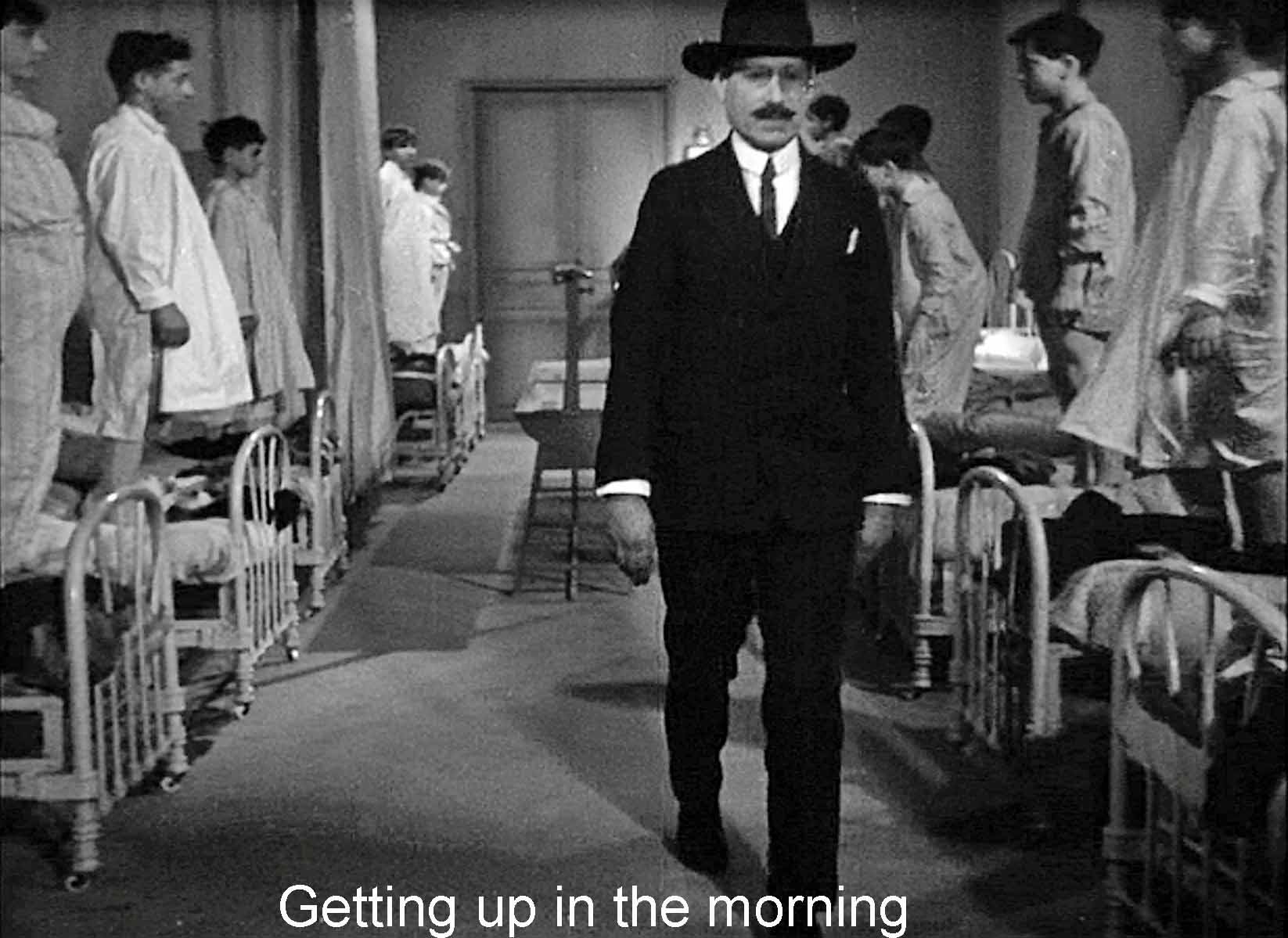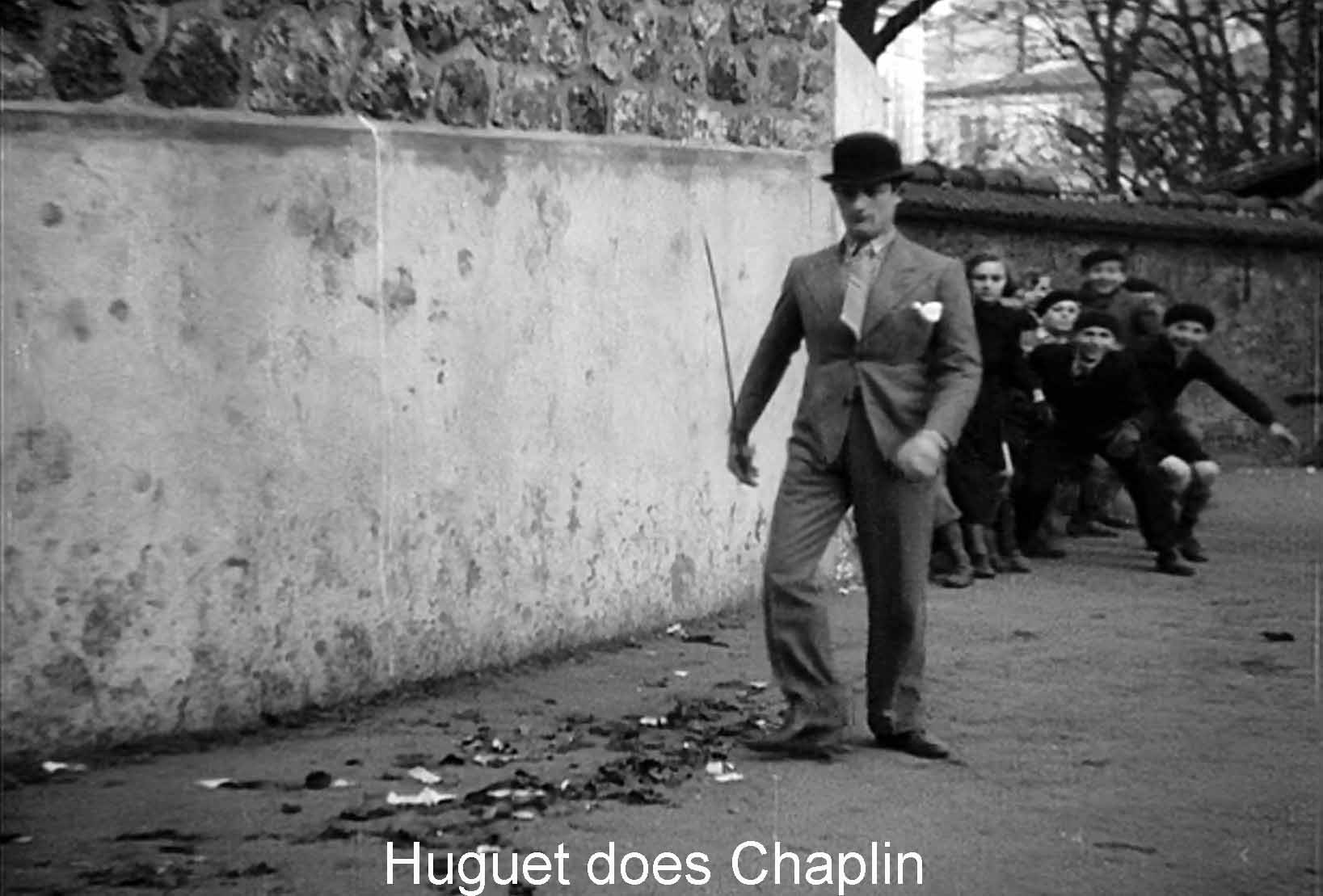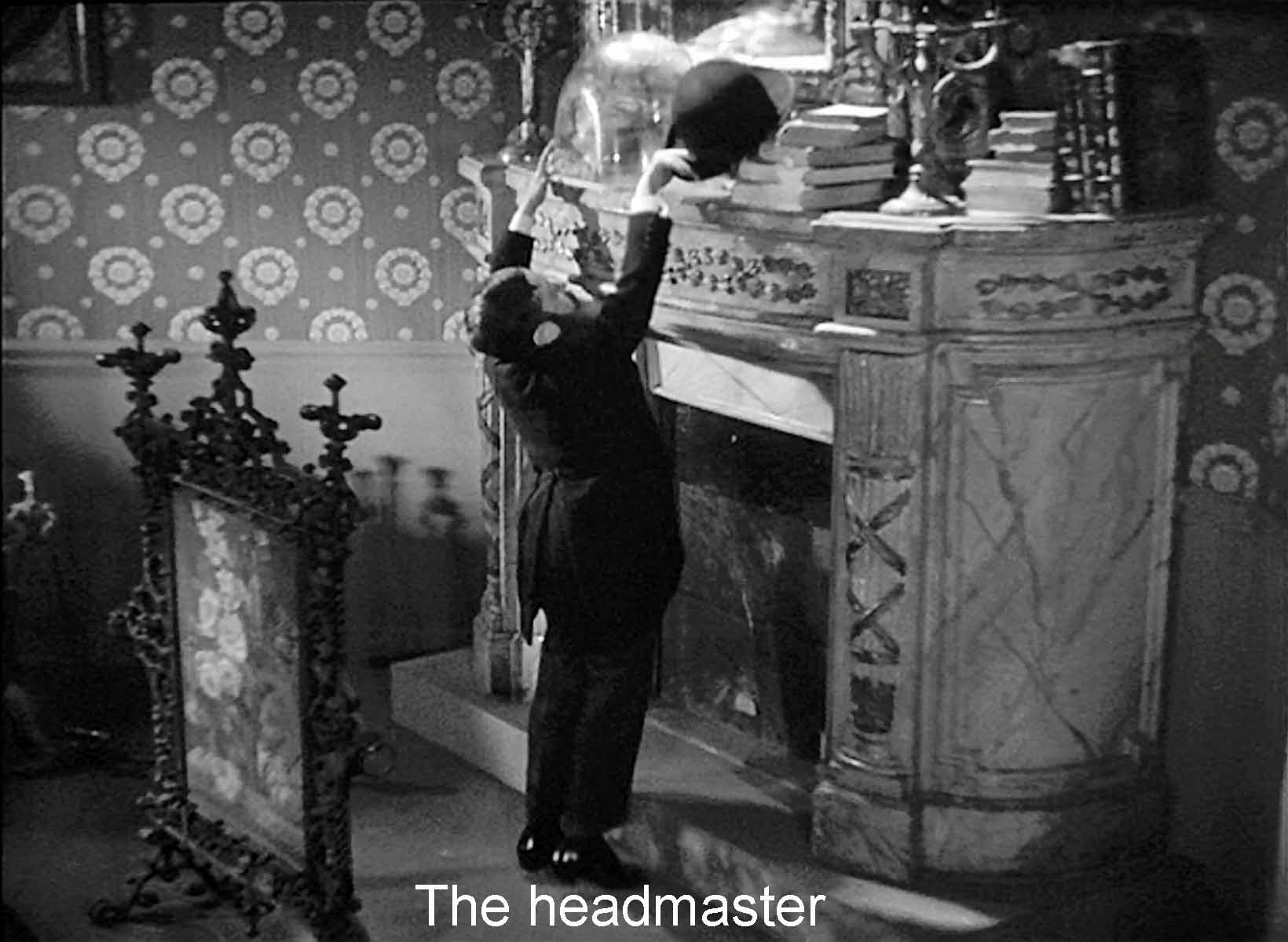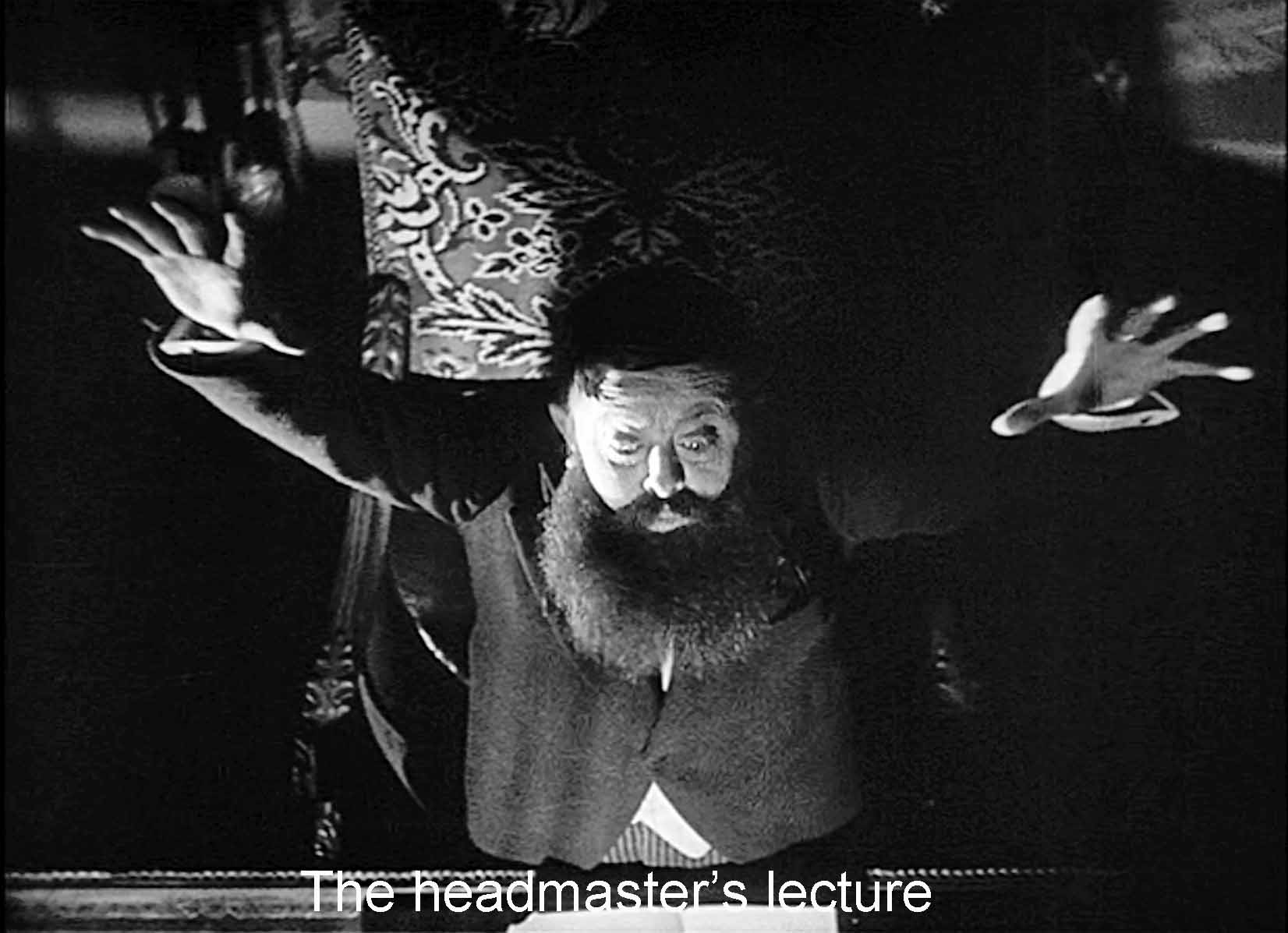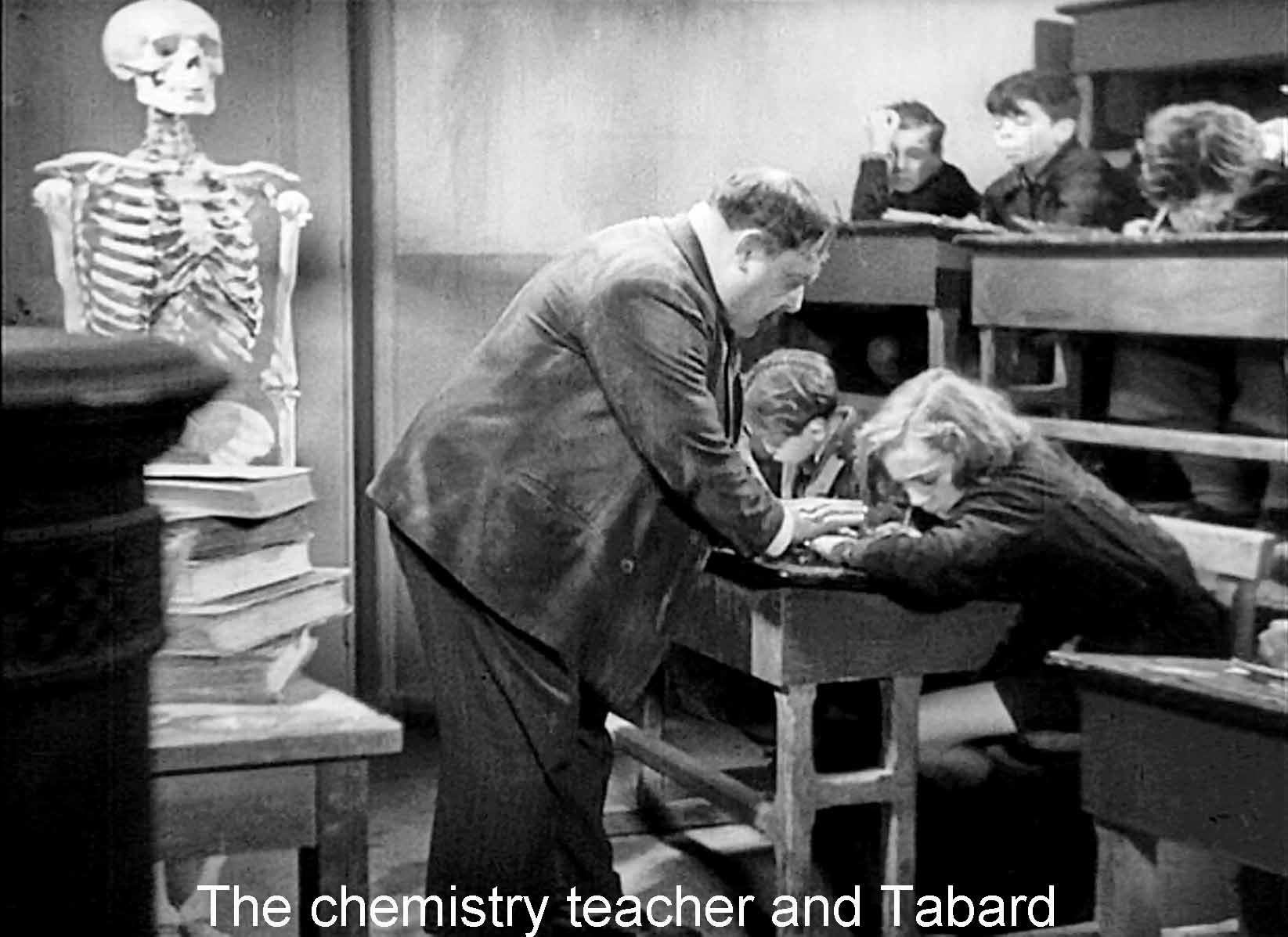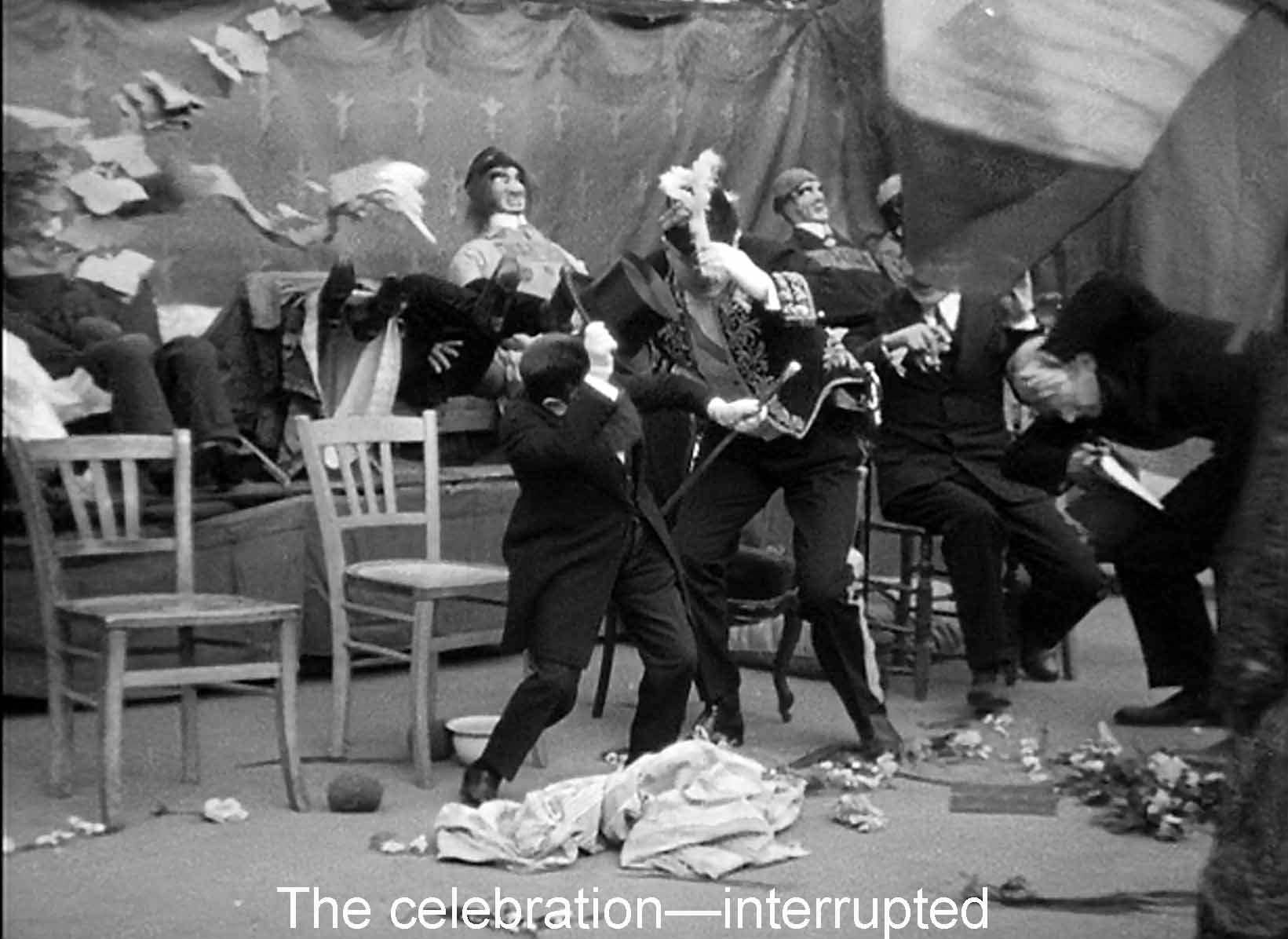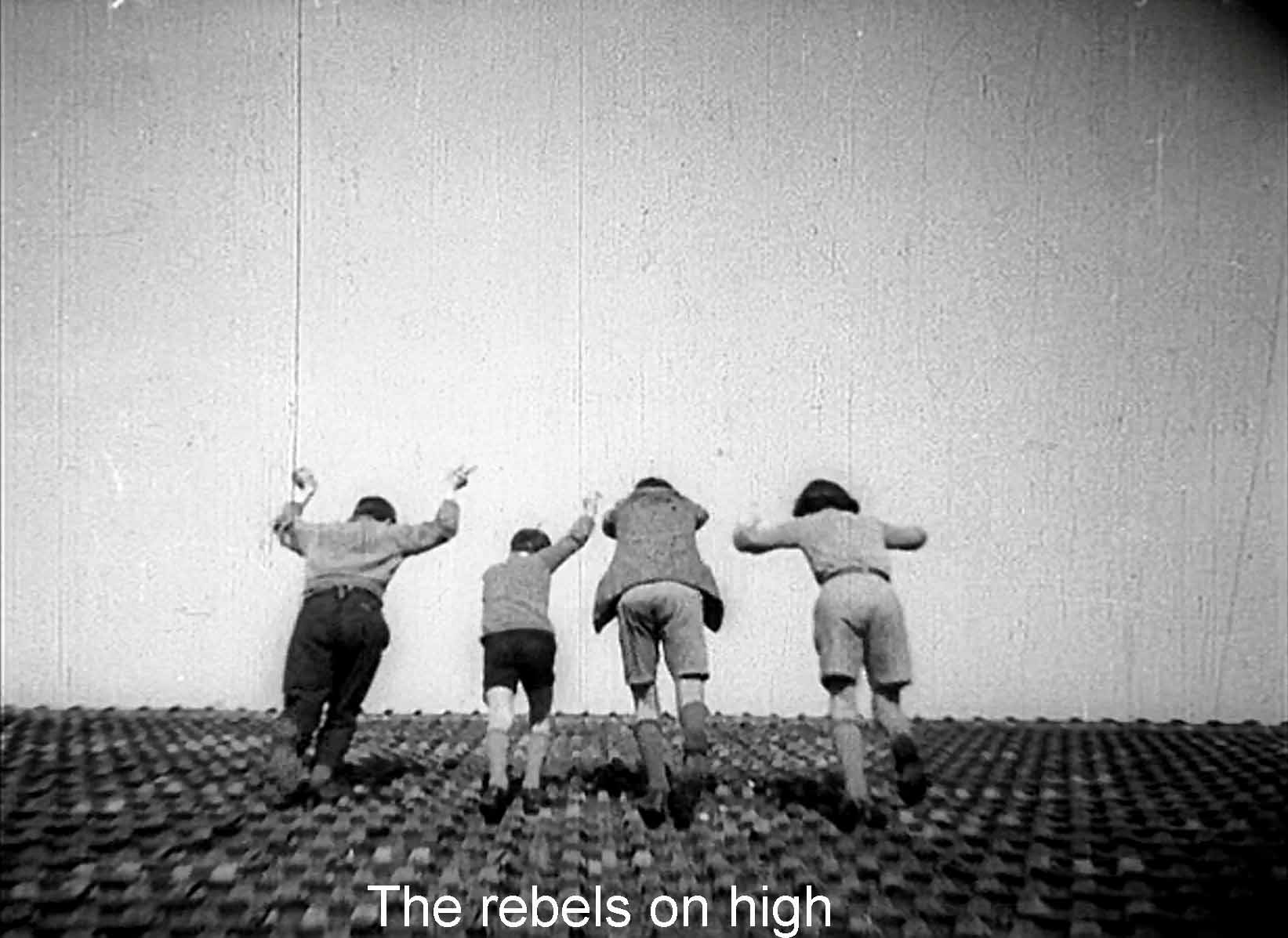Anarchy is the theme, and anarchy is the style for this celebrated film. It deals with the beginning and end of an academic year at a grotesque boys’ school. French critics call it l’école carcérale, prison school. I’m not sure how literally we are to take that. It is one of the for-profit boarding schools that were part of the French educational system in the 1930s. Vigo modeled it closely on a boarding school which he himself was forced into.
The film was released in 1933, but the authorities quickly banned it as “anti-French” because it disparaged French educators and the French educational system. The film was discovered and acclaimed in 1945 at a revival of Vigo’s works, and ever since it has been greatly praised. The nouvelle vague director François Truffaut said it was one of the ten best films ever. (He drew on it for his own 400 Blows, based on his own childhood.)
We see precious little teaching in this awful school, but a great deal of surveillance and punishment. Zéro de conduite, zero for conduct, is the grade the masters slap on their misbehaving students. It keeps them at the school on Sunday (“detention”), the one day they can escape.
The film begins with two boys on the train which is taking them back to school at the beginning of the academic year. Another passenger in their compartment sleeps. (When we arrive at the station, we will learn he is Huguet, a new master or surveillant—monitor—at the school.) The boys show off to each other the toys they are bringing to liven things up.
Once at the school we see their dormitory, thirty beds where they are forced to be quiet and made to stand for two hours if they don’t obey. It is here that the infuriating zéro de conduite is awarded that sets three boys on their rebellious path.
The masters are grotesques. The night watchman wears dark glasses. Le surveillant-général, the housemaster, “gas jet” (played by Du Verron) who never says a word onscreen; we hear his “zéro de conduite, detention on Sunday” from behind a screen. Another monitor glides here and there, stealing the boys’ candy. There is the grim monitor (Robert le Flon) who meets the boys at the station whose nickname is “dry fart.” He never says anything—period. The chemistry teacher (Léon Larive) is horribly fat (particularly next to the skeleton the boys have hung by him). And he tries to seduce the boy Tabard.
The crowning glory is the headmaster, a dwarf (Delphin) who proclaims the “moral responsibility we have.” He suspects two of the boys of a sexual involvement and delivers a monstrous lecture when it is actually his chemistry teacher who is the guilty one. All these monitors and masters wear bowler hats or top hats as signs of their authority—hence the headmaster’s elaborate care with his hat. They all have glasses or facial hair, again, to mark their authority, all, that is, except Huguet.
He is played by Jean Dasté, whom Vigo will cast as the hero of his next film. Here, he is the monitor “lunaire,” from the moon. (Some French critics say he is insane.) Where the old monitors dress in black and wear bowler hats, he is young, mostly sports a pork-pie hat, and wears a tan suit. He first appears outside the school as a passenger with the two boys on the train. They proclaim him dead, but then he follows them in the station—making him, I suppose, a death-and-rebirth character with all the possibilities that that status opens up. At recess, he wears a bowler hat to imitate Charlie Chaplin, to the boys’ delight, and he runs around with their ball. Huguet supports the boys; he stands to conceal them when they work up their plot in the playground. Certainly he differs from all the other adults. He shows a heterosexual impulse when he flirts and pursues a woman he meets when he takes a crowd of boys on a walk through the town. And the crowd of boys shows the same interest. Vigo turns the woman into a priest (who also wears a skirt), abashing Huguet but getting in a gibe at religion. In short, Huguet is the film’s hero, antagonist to the school’s awful authorities and very much on the side of the anarchist rebels.
The boys were real. Except for the four principal conspirators, they were kids Vigo rounded up in the working-class 19th arrondissement where he was living. As filming proceeded, they became just as rambunctious as the kids in the film, causing Vigo no end of trouble, but giving his film a powerful authenticity. Are not twelve-year-old boys natural anarchists?
Sometimes people say this film has no structure. But actually the events of the film are foretold in the opening scene. The two boys on the train, Caussat and Bruel, show off the various tricks and toys they plan to use to liven up this dreary school. Interestingly, these foreshadow much of the later film.
Bruel has a finger trick, making the tip of his thumb detach. Bodies and body parts define both the masters' names and the dormitory exuberance of the boys.
His ball toy foreshadows the ball at recess that can magically appear or disappear.
Caussat’s tiny trumpet foretells the rallying cries of the conspirators or the boys’ joyful parade through the dormitory after the pillow fight.
The boys have balloons they treat as breasts. We will see sex in a master’s flirtation on the boys’ walk with a woman; in Caussat’s being blindfolded so that he won’t see the panties of “his little chickadee.” Finally we will see sex in the fat chemistry teacher’s oily sexual moves toward the long-haired boy Tabard.
Feathers foretell the magnificent pillow fight.
Finally the boys smoke cigars (in a no smoking compartment), a first violation of rules, and the cigars are a prelude to the cigarettes the boys sneak in the school toilets.
Vigo’s film that seems so chaotic is all there at the beginning.
Nevertheless, anarchy is the theme and anarchy is the style. Vigo has Caussat make a soccer ball appear and disappear. A night watchman wears dark glasses and sees no mischief. A pillow fight ends in a cosmic shower of feathers. Vigo has Huguet stand on one hand on his desk and draw a caricature of the housemaster, “Gas-jet,” that then morphs into a sketch of Napoleon. At the end the four triumphant rebels march off into, apparently, the sky. Anarchy has triumphed.
In that shot, Vigo points his camera up. That’s a distinctive move he makes in this film, shooting up when the boys have taken over, shooting down on them to indicate their subjugation. The camera marks the power relations. Vigo's cinematographer, Boris Kaufman, was schooled by the Soviet documentarist Dziga Vertov. Kaufman went on to Hollywood and such films as 12 Angry Men (1957) and On the Waterfront (1954) for which he won an Oscar. Here he artfully shoots down on the students when he wants to show them being dominated and upward when they succeed in their rebellion. By going back and forth horizontally at Tabard’s confrontation with the headmaster and the other monitors he lessens their authority. The slow motion during the pillow fight gives it so marvelous a surreal quality that the surrealists claimed this film as one of their own.
Sound was new enough in 1932, when this film was shot, that there are few scenes with dialogue but much non-diegetic sound: music, rain, children’s shouts and singing. All very appropriate if somewhat scratchy.
All in all, it is a delightful film. One of the ten best ever? I don’t know about that, but it is a triumph of realism-surrealism and a special treat for me. In school I was always the class cut-up, le farceur as the French would say. I see this film as especially made for me. And so apparently do many others, who give it the high praise it surely deserves.
